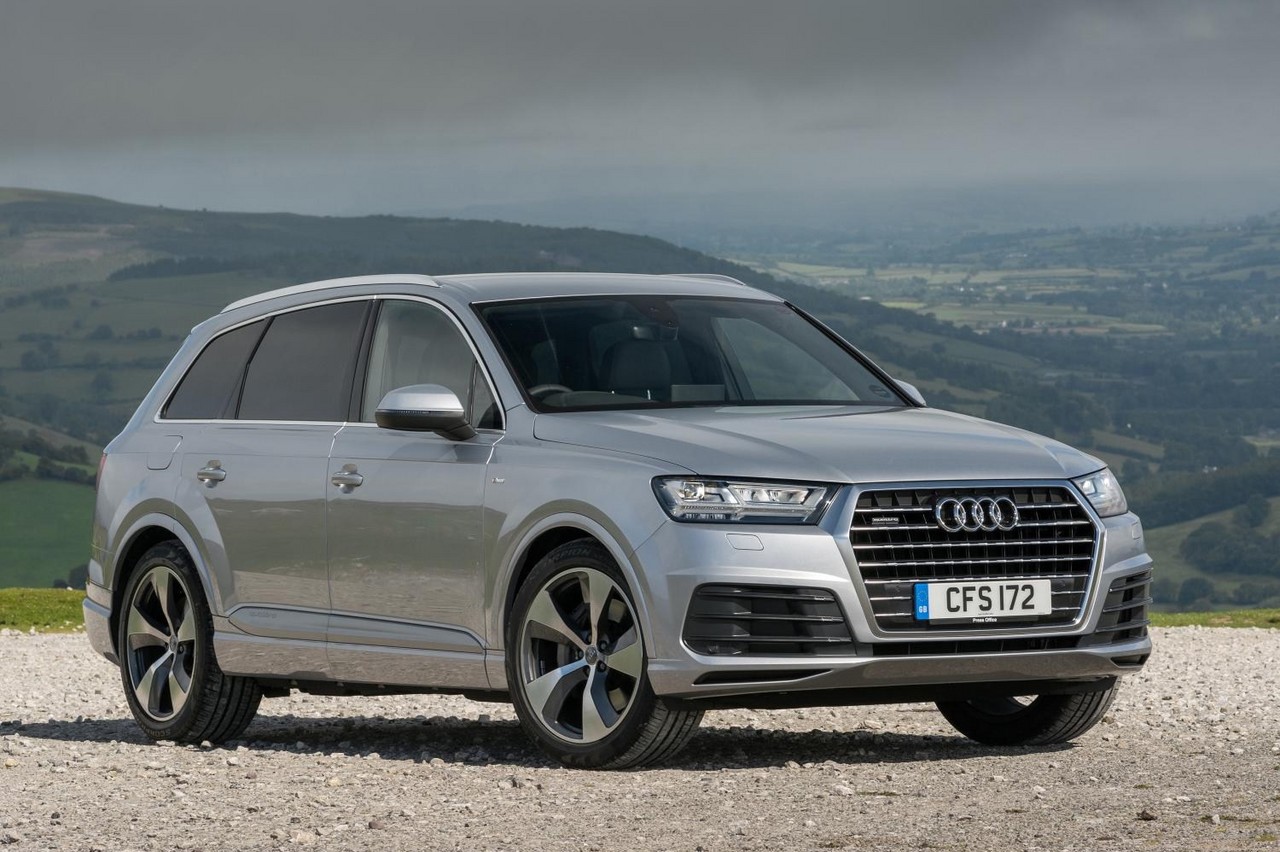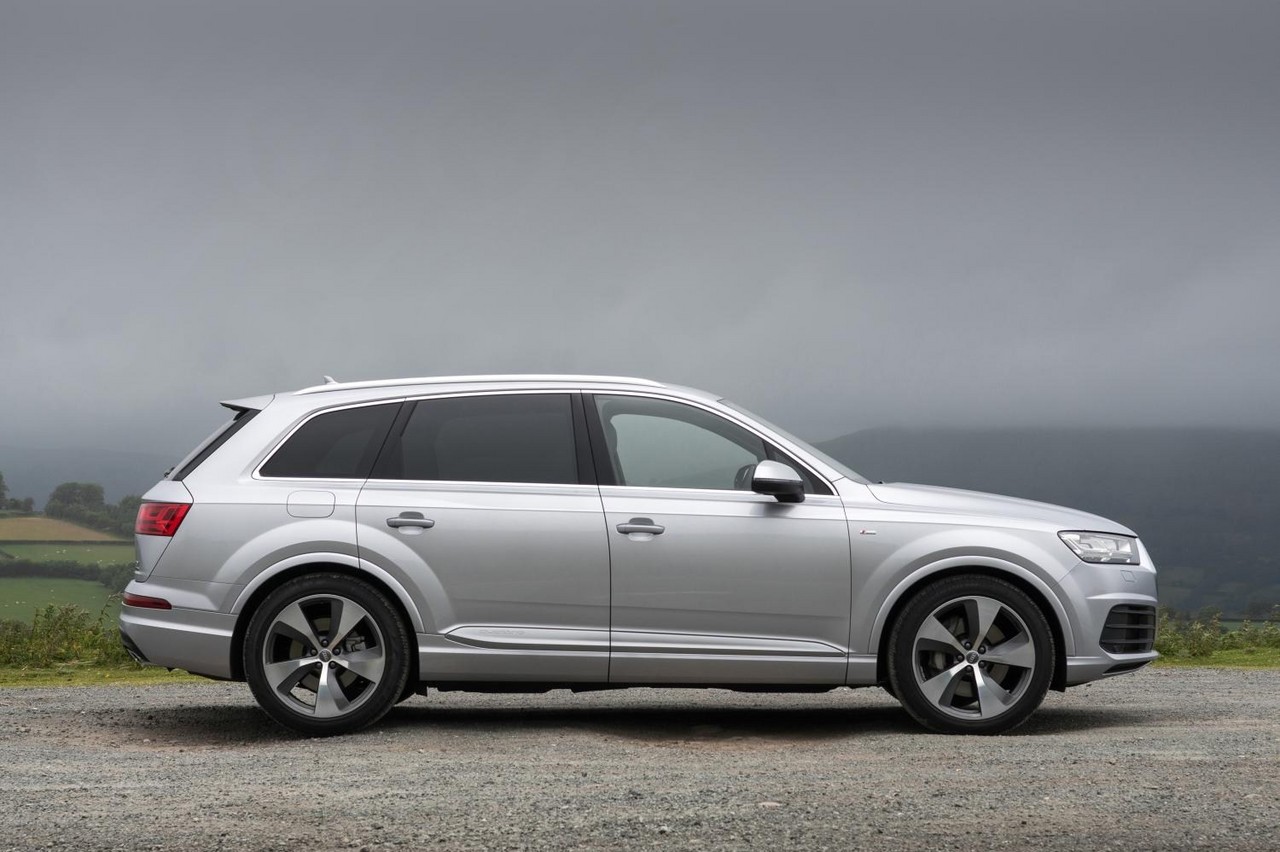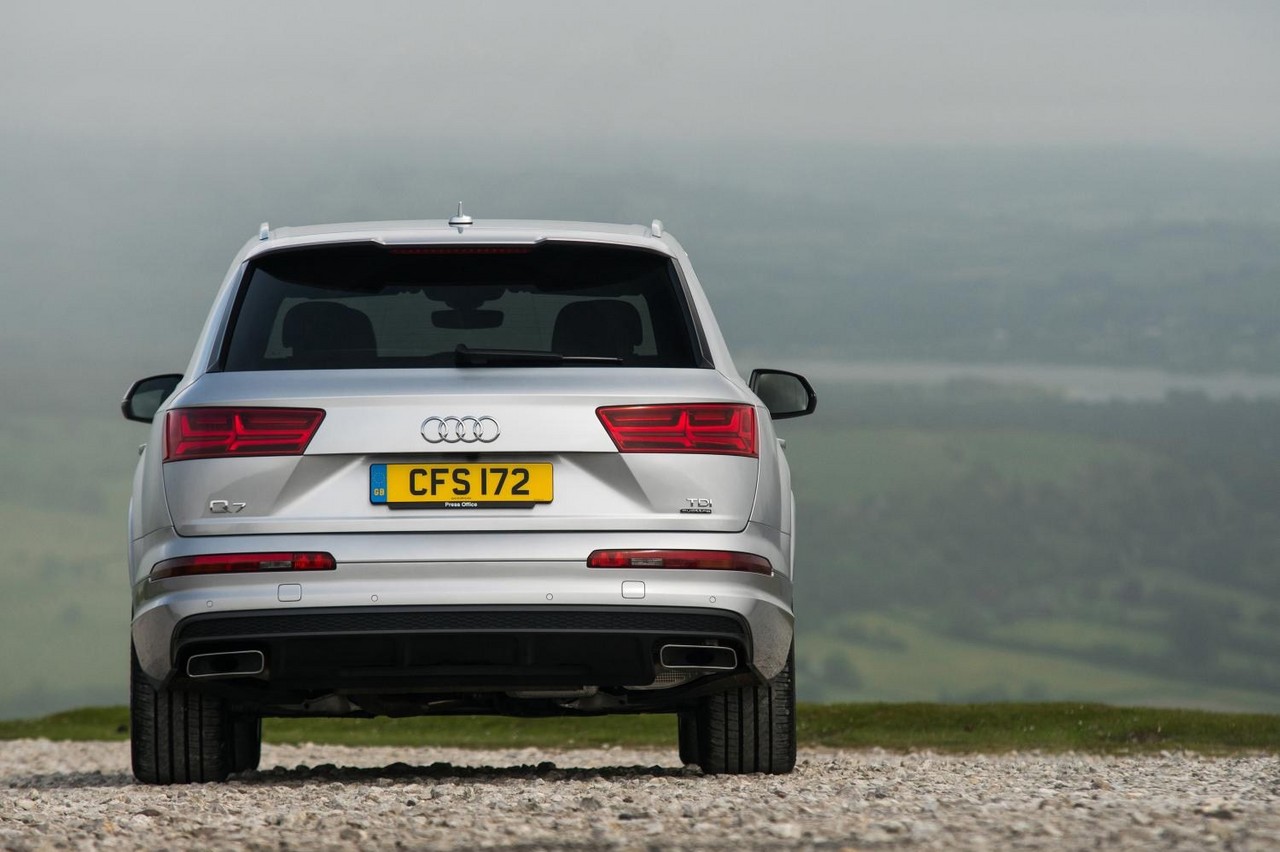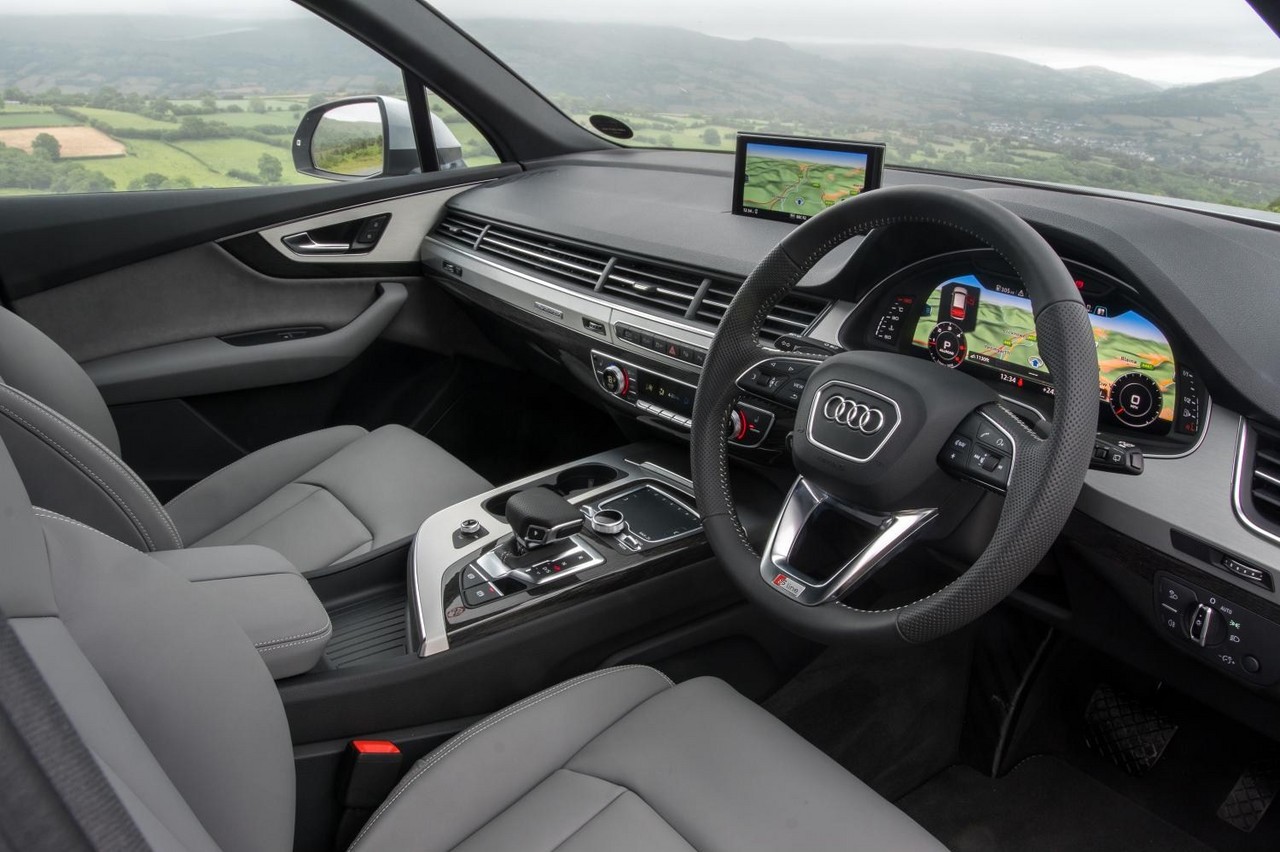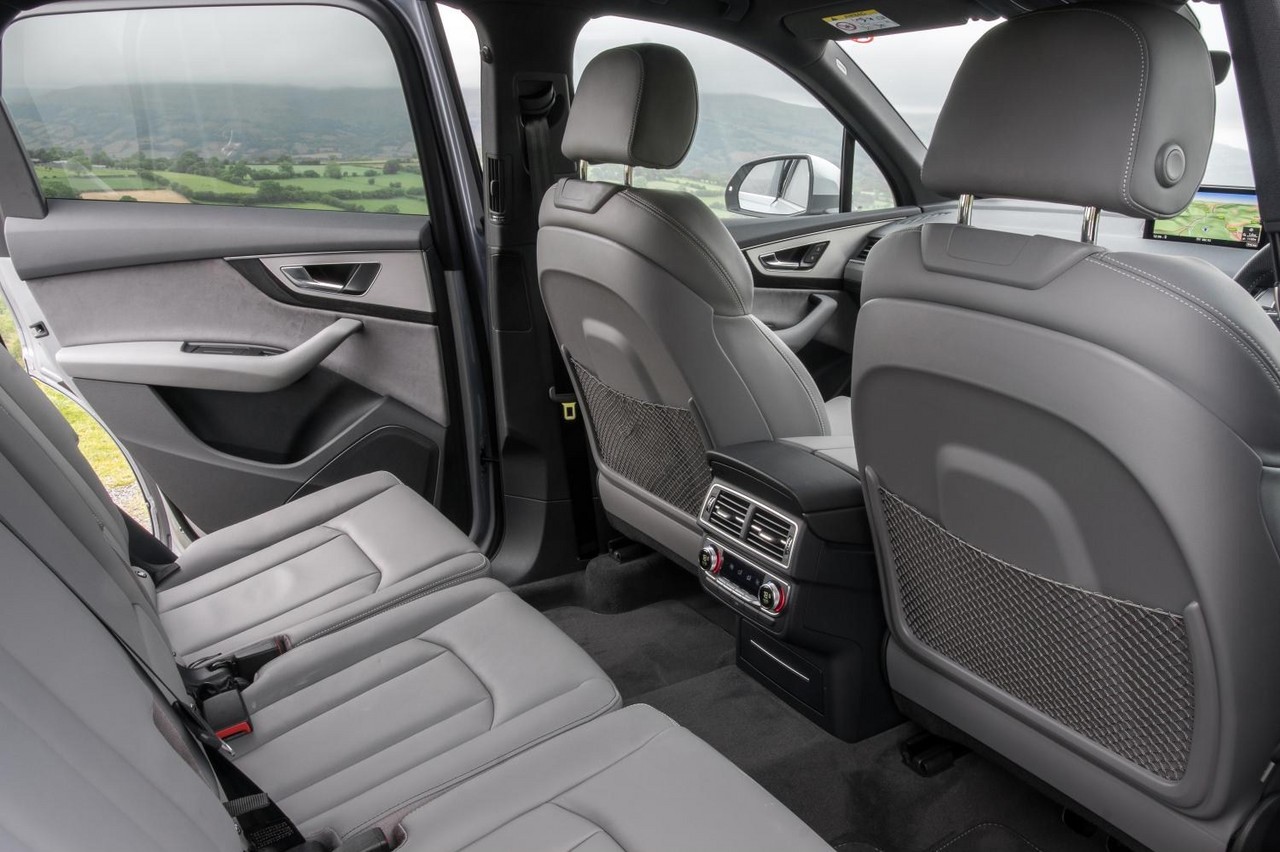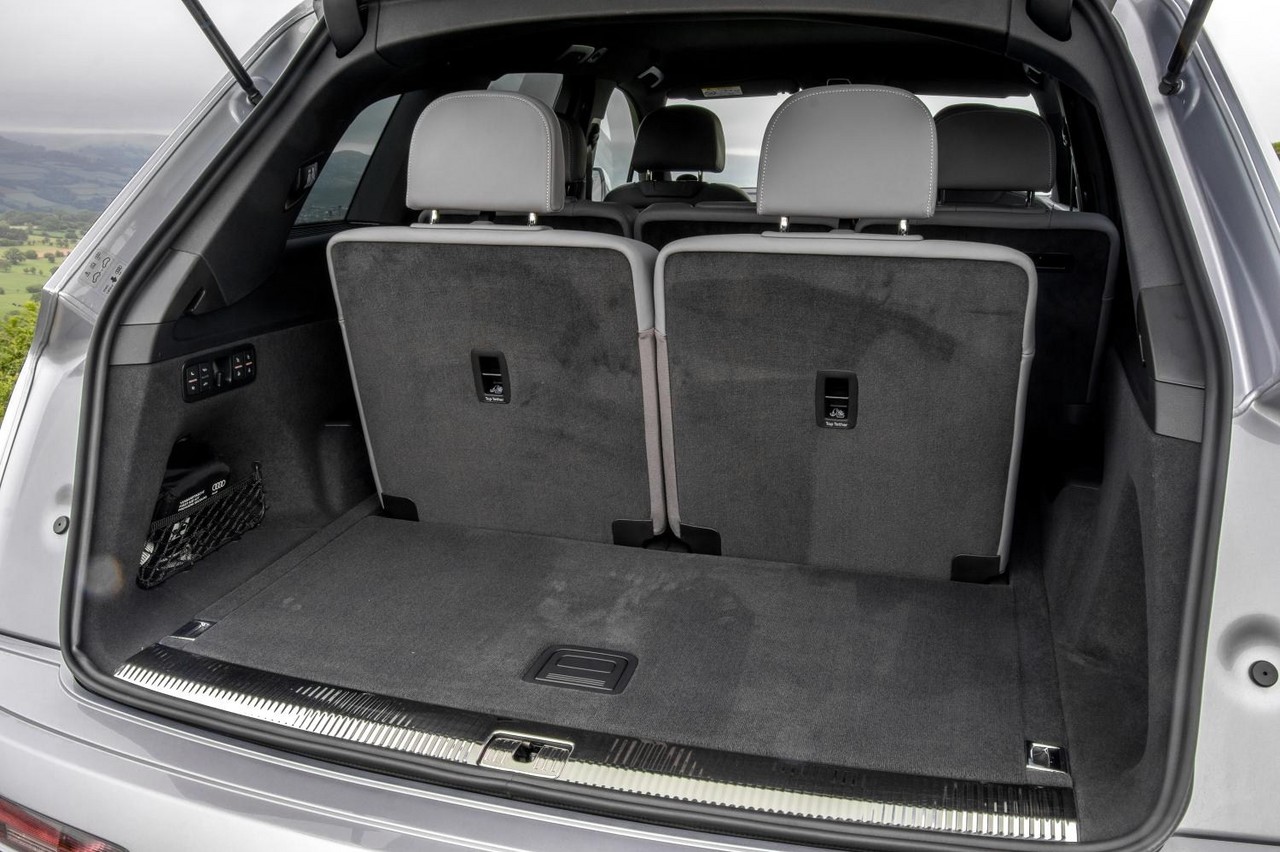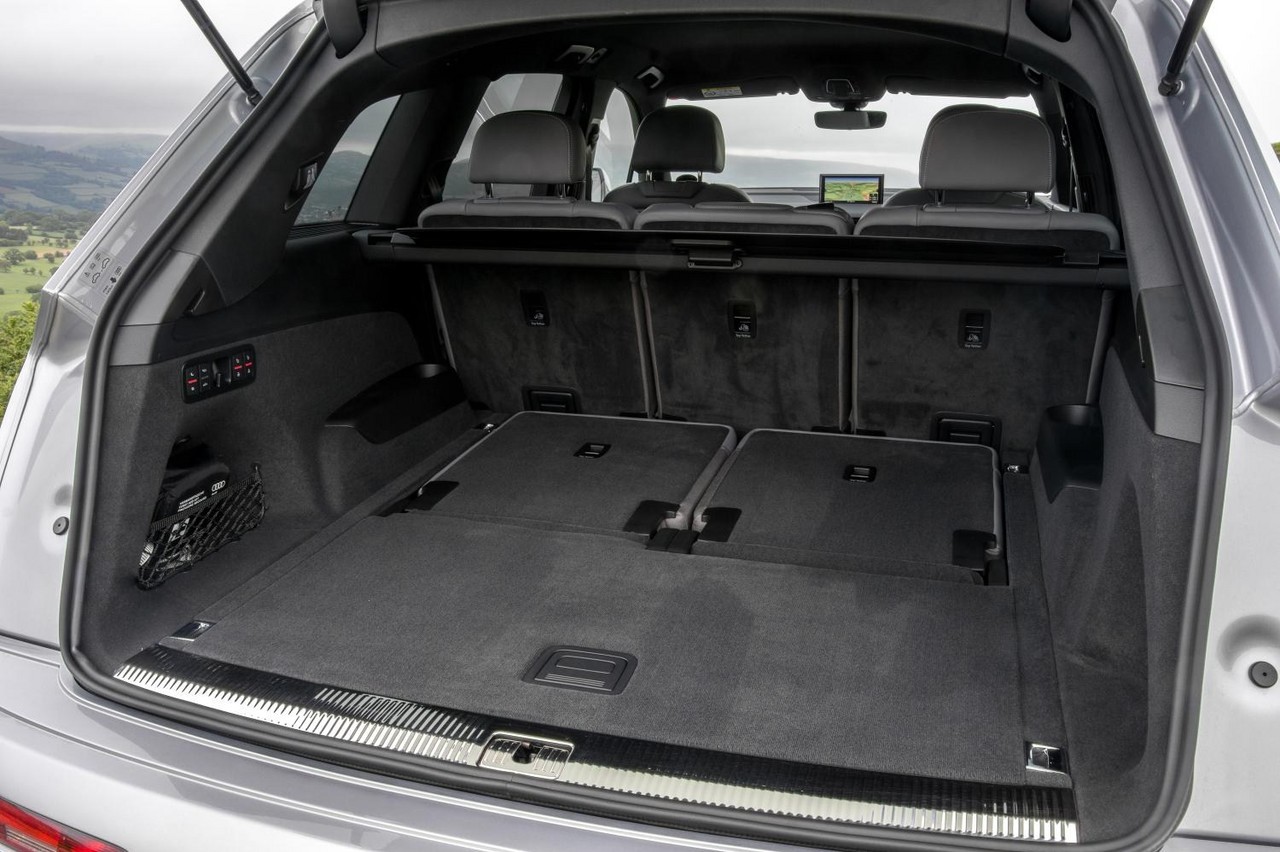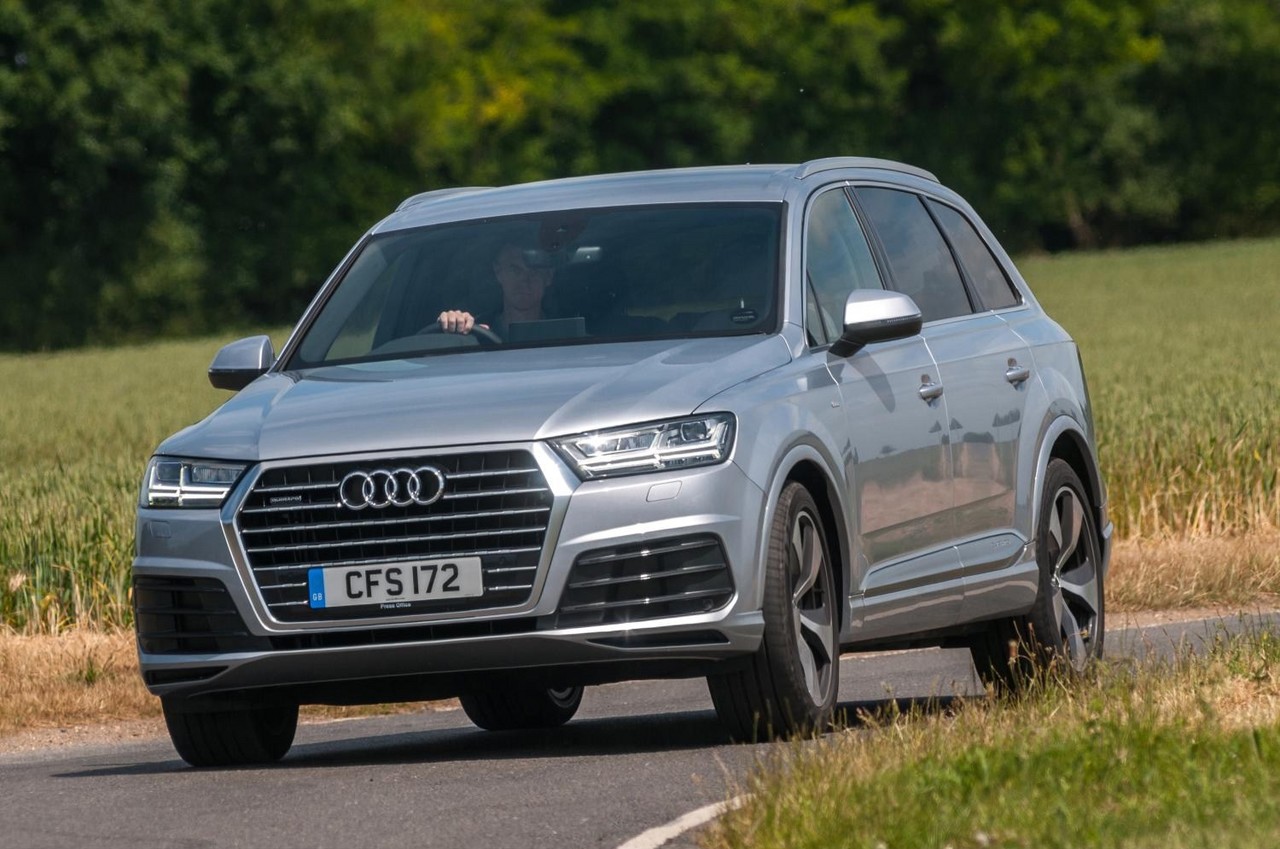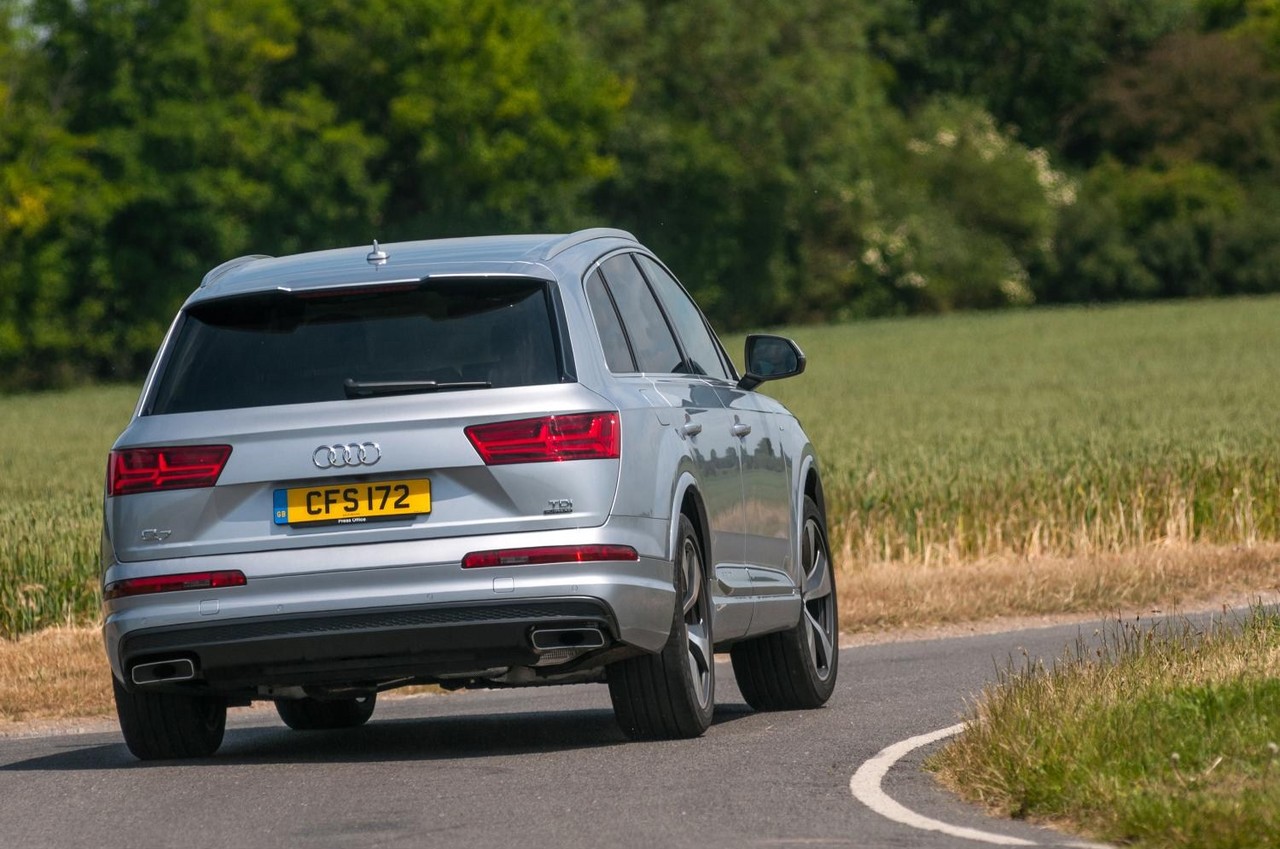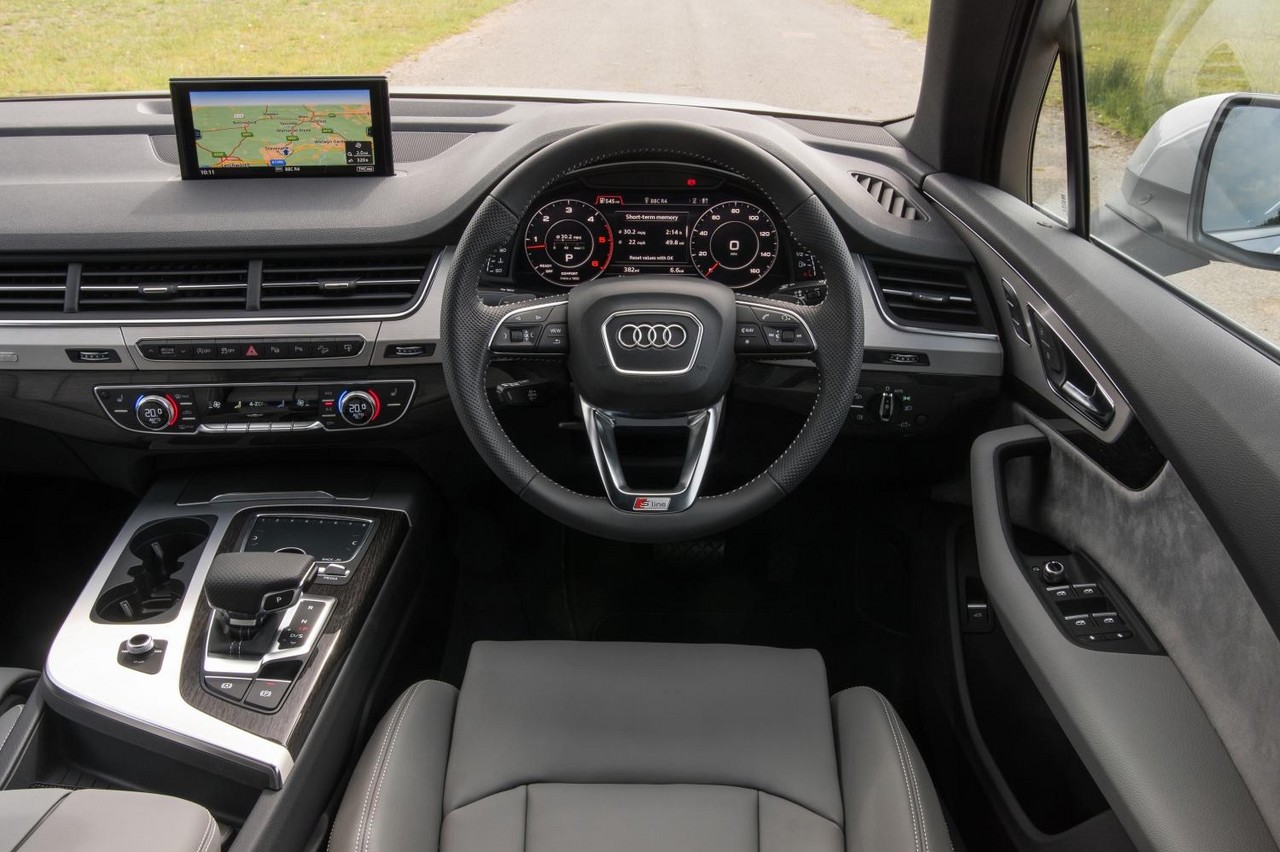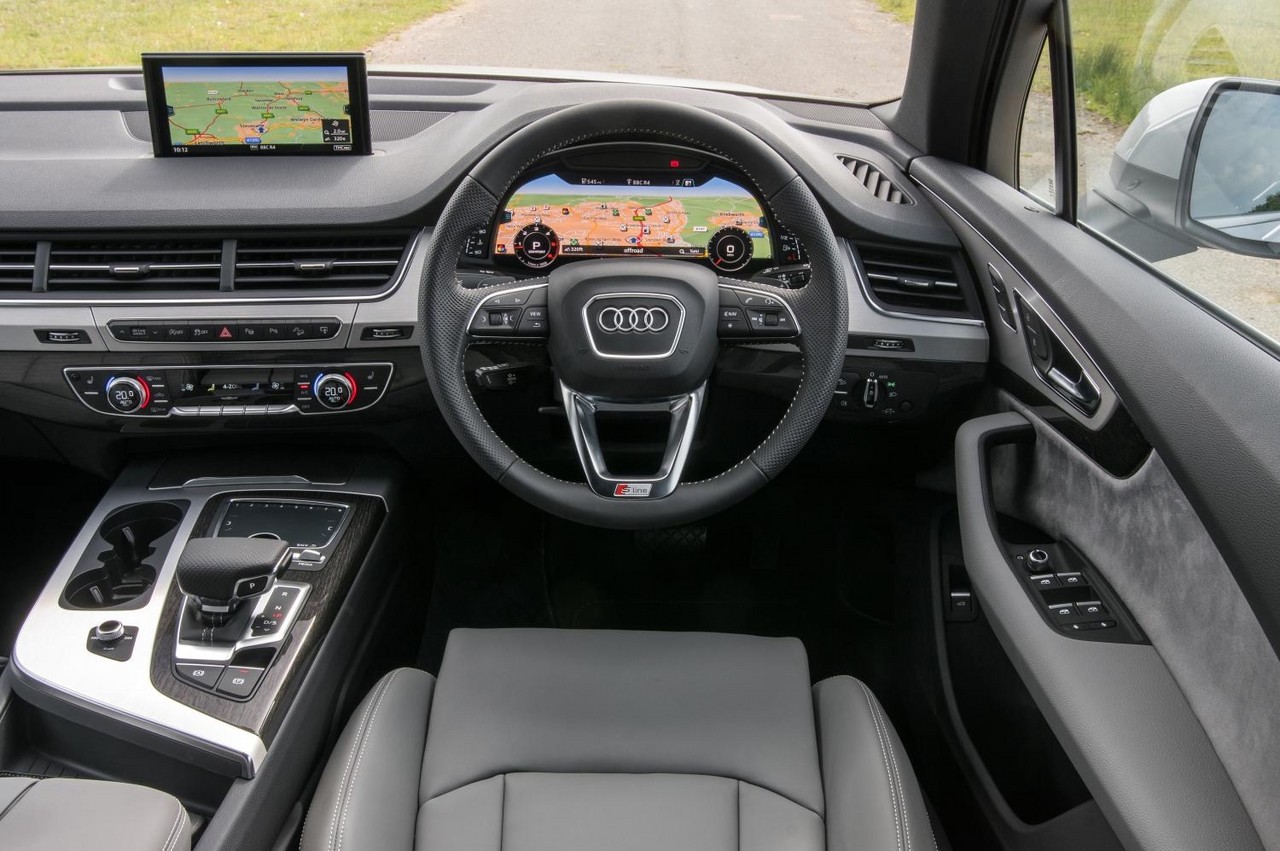
- Responsive and frugal turbo-diesel engines
- High standard of interior fit and finish
- Competent dynamics
- Optional air suspension provides comfortable ride…
- … though ride deteriorates on 21-inch wheels
- Third row has limited headroom and no air vents
Overview
Released in Australia in September 2015, the Audi 4M Q7 was a seven-seat, all-wheel drive SUV. Manufactured in Bratislava, Slovakia, the Audi 4M Q7 range consisted of the 3.0 TDI ultra and 3.0 TDI variants, both of which were powered by 3.0-litre V6 turbo-diesel engines that were mated to eight-speed automatic transmissions.
3.0 TDI engine
The 2967 cc six-cylinder turbo-diesel engines had a 90-degree ‘V’ angle, a compacted vermicular graphite cast iron cylinder block with 83.0 mm bores and a 91.4 mm stroke, a cast bed-plate reinforcing lower bearing frame with four main bearings affixed with four bolts, a cast aluminium alloy cylinder head, double overhead camshafts (driven by four simplex roller chains and spur gears), a variable geometry turbocharger, common-rail direct injection operating at a pressure of 2000 bar via piezo injectors, four valves per cylinder and a compression ratio of 16.0:1.
The 3.0 TDI engine also utilised a die-forged steel cross-plane crankshaft with offset crankpins, fracture-split connecting rods and a counter-rotating balance shaft driven by a simplex roller chain.
To reduce fuel consumption, the 3.0 TDI engine had a start-stop system which enabled the engine to shut down when the vehicle was stationary in traffic. Over the combined ADR 81/02 test cycle, fuel consumption for the Audi Q7 3.0 TDI ultra and 3.0 TDI was 5.8 and 5.9 litres per 100 km, respectively.
| Variant | Engine | Trans. | Peak power | Peak torque |
|---|---|---|---|---|
| 3.0 TDI ultra | 3.0-litre turbo-diesel V6 | 8sp auto | 160 kW at 3250-4750 rpm | 500 Nm at 1250-3000 rpm |
| 3.0 TDI | 3.0-litre turbo-diesel V6 | 8sp auto | 200 kW at 3250-4250 rpm | 600 Nm at 1500-3000 rpm |
quattro all-wheel drive (AWD) system
The Audi 4M Q7 had a self-locking centre differential that was integrated into the housing of the eight-speed automatic transmission. In normal conditions, the centre differential provided a 40:60 front:rear torque split. In the event that a wheel lost traction, however, up to 70 per cent of available torque could be directed to the front axle or 85 per cent to the rear axle.
The AWD system operated in conjunction with a torque vectoring function which provided targeted braking to the inside wheels when cornering to generate yaw and thereby reduce understeer.
Body and dimensions
The Audi 4M Q7 3.0 TDI had an unladen weight of 2060 kg (EU standard, without driver), 235 kg less than its Audi 4L Q7 predecessor. While the passenger cell utilised ultra-high-strength hot-shaped steel, mass reduction was also achieved through the use of aluminium for the doors, front wings, bonnet and rear hatch. Furthermore, three torsion rings reinforced the front end, the area of the C-pillars and the rear hatch cut-out.
Relative to the Audi 4L Q7 , the Audi 4M Q7 was 34 mm shorter (at 5052 mm), 15 mm narrower (1968 mm), 4 mm taller (1741 mm) and has an 8 mm shorter wheelbase (2994 mm). Inside, seven seat Q7 models had a cargo volume of 295 litres with all seats upright and 770 litres with the third row seats folded.
Suspension
Rather than the double wishbones of its predecessor, the Audi 4M Q7 had five-link front and rear axles. As an option, the Audi Q7 was available with adaptive air suspension and active damping. The air suspension enables the body to be lowered by up to 30 mm when driving at highway speeds for greater aerodynamic efficiency and raised by up to 60 mm for increased ground clearance when driving off-road. Specifically, the Audi 4M Q7 had a drag coefficient of 0.325 Cd with steel springs and 0.316 Cd with air springs when set for highway driving.
To reduce mass, the links of the wheel suspensions were made from aluminium and high-strength steel, the cardan shafts of the front axle were hollow and the pivot bearings were aluminium forgings.
Steering
The Audi 4M Q7 had electromechanical power-assisted steering and all-wheel steering. With all-wheel steering, an electric spindle drive could turn the rear wheels inward by up to five degrees. At low speeds, the wheels turned in the opposite direction to the front wheels to reduce the vehicle’s turning circle (12.4 metres); at high speeds, however, the rear wheels turned in the same direction as the front wheels for greater stability.
Safety equipment
Standard safety equipment for the Audi 4M Q7 included dual front airbags, front and second row seat-mounted side airbags, full-length curtain airbags, ABS, electronic brake force distribution, brake assist, electronic stability control, traction control and front seatbelts with pretensioners and load limiters.
Standard active safety technologies for the Audi Q7 included:
- Audi pre sense city: operating at speeds up to 85 km/h, Audi pre sense city used a windscreen-mounted front camera to scan the road for other vehicles and pedestrians up to 100 metres away. If there was a risk of a collision, the driver received a series of warnings. If the driver failed to respond, full braking force would be applied autonomously. Collisions could be prevented at initial speeds up to 40 km/h; at higher speeds (up to 85 km/h), the severity of the collision would be reduced;
- Audi side assist: used two radar sensors to monitor the area 70 metres behind the vehicle during lane change manoeuvres at speeds over 15 km/h. If there was a vehicle in the driver’s blind spot or an approaching vehicle was detected, the driver would be alerted by a warning LED in the respective door mirror. If the driver activated the turn signal, the LED would flash several times at high frequency;
- Audi pre sense rear: if a rear-end collision was anticipated, the seats would be moved into the safest position for a collision;
- Exit warning: activated when the vehicle stopped moving, ‘exit warning’ could alert occupants if vehicles were approaching from behind by illuminating red fibre optics in the door-opening mechanism as the doors were opened;
- Rear cross-traffic assist: when reversing at low speeds, rear cross-traffic assist used the rear radar sensors to detect approaching traffic. If approaching traffic was detected which may cross the vehicle’s path, the driver received warnings (visual, acoustic and a brief, jolting application of the brakes);
- Multi-collision brake assist: following a collision, the brakes would be applied for controlled deceleration to reduce the likelihood and severity of subsequent collisions. The multi-collision brake function, however, could be over-ridden by the driver; and,
- Turning assistant: operated at speeds between 2 km/h and 10 km/h, the ‘turning assistant’ monitored oncoming traffic when the indicator was activated. In potentially dangerous situations, the brakes could be applied to prevent the turning manoeuvre.
Assistance Package and Night Vision Assistant
As an extra-cost option, the Audi Q7 was available with an ‘Assistance Package’ which included:
- Audi pre sense front: an extension of ‘Audi pre sense city’, ‘Audi pre sense front’ could prevent front-to-rear collisions or reduce their severity from higher speeds. In hazardous situations, the driver would receive visual and acoustic warnings to apply the brakes, followed by a brief application of the brakes for a jolting effect to alert the driver. If the driver failed to respond, the Q7 would decelerate to the greatest possible extent if the vehicle ahead was still moving;
- Audi active lane assist: used a camera and steering interventions to keep the driver in their lane at speeds above 65 km/h;
- Adaptive cruise control (ACC) stop & go: accelerated and braked to maintain the desired distance from the vehicle ahead, even in stop-start traffic; and,
- Traffic jam assistant: as part of the ACC, provided automated steering if traffic was congested and vehicle speeds were below 65 km/h.
As a separate option, Audi’s ‘Night vision assistant’ used an infra-red camera to detect pedestrians and larger animals; if detected, they would then be highlighted with yellow markings on the ‘virtual cockpit’ display (detailed below).
Euro NCAP testing
In Euro NCAP crash testing , a left-hand drive 2015 Audi Q7 3.0 TDI quattro received a five star safety rating which included a 94 per cent adult occupant protection rating and an 88 per cent child occupant protection rating.
Brakes
The Audi Q7 3.0 TDI had 375 mm (diameter) front brake discs with six-piston aluminium calipers and 350 mm solid rear discs with four-piston calipers.
Features: Audi Q7 3.0 TDI ultra
Standard features for the Audi 4M Q7 3.0 TDI ultra included 8.5J x 19-inch alloy wheels with 255/55 R19 tyres, a 180 watt sound system with a six-channel amplifier and ten speakers, a CD/DVD player, auxiliary inputs (3.5 mm/SDXC card readers/USB) and 10 GB flash memory for music, digital radio reception, Bluetooth mobile phone connectivity and audio streaming, Audi’s ‘MMI navigation plus’ with a retractable 8.3-inch dashboard monitor with satellite navigation (including three years of map updates and live traffic updates) and voice operation, leather appointed seats, power adjustable front seats with driver’s seat memory settings, dual-zone climate control air conditioning, cruise control with speed limiter, ‘Xenon plus’ headlights with LED daytime running lights, automatic headlights, rain-sensing wipers, 35:30:35 split and folding second row seats, 50:50 split and folding third row seats, remote central locking, power adjustable mirrors with auto-dimming and folding functions, power windows, tilt and telescopic steering wheel adjustment, an auto-dimming rear view mirror, a power-operated tailgate with gesture control, tyre pressure monitoring, a trip computer and an immobiliser.
Features: Audi Q7 3.0 TDI
The Audi Q7 3.0 TDI was further equipped with ‘Cricket’ leather seat upholstery and the ‘Audi virtual cockpit’ which consisted of a 12.3-inch TFT display for the instruments and which could be configured to show navigation maps.
As standard, the Q7 3.0 TDI was also fitted with Audi’s ‘parking system plus’ which included twelve ultrasonic sensors, 360 degree surround and top view cameras, and automated steering for both perpendicular and parallel parking manoeuvres.
Paint finishes
The Audi Q7 is available in nine paint colours: Carrara white, night black, Argus brown, diamond beige, Floret silver, glacier white, graphite grey, orca black and ink blue.
Specifcations
Related links
